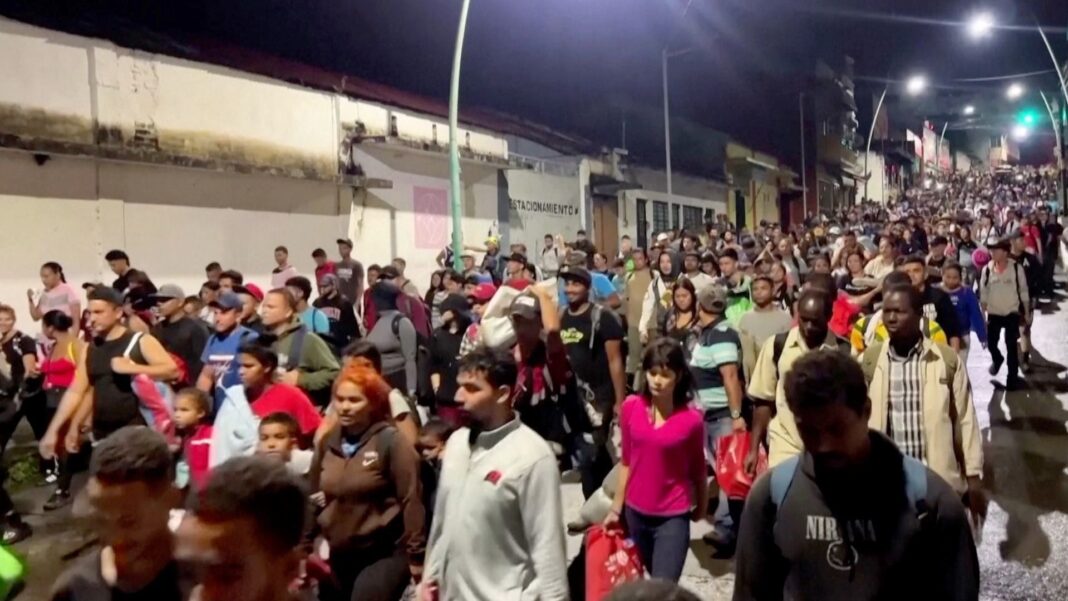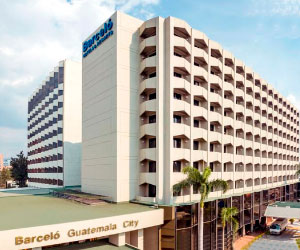When Altagracia left Honduras to embark on the monthslong journey to the US-Mexico border, she had two clear goals on her mind: reach the United States to claim asylum and reunite with her children living there.
But after leaving her hometown of Siguatepeque, in Honduras’ central highlands, she learned that Donald Trump had won the US election touting a crackdown on immigration – one that she feared could shrink her chances of reaching the US after a nearly 3-month trip through central America and Mexico.
Speaking from a shelter in the southern Mexican state of Oaxaca in December, the 39-year-old told CNN she was racing against the clock to reach the US’s southern border with Mexico before Trump’s January 20 inauguration.
“We’ve been told that when Trump starts, he won’t let us in,” Altagracia, who asked CNN not to share her last name over fears it would impact her asylum claim in the US, said on a phone call.
Altagracia is one of several migrants CNN spoke to who are racing to reach the US-Mexico border before Trump returns to the White House.
Her concerns, she says, stem from Trump’s rhetoric around mass deportations and closing the border altogether.
“On my first day back in the Oval Office, I will sign a historic slate of executive orders to close our border to illegal aliens and stop the invasion of our country,” Trump said late December at a Turning Point USA event in Phoenix, Arizona.
“On that same day, we will begin the largest deportation operation in American history,” Trump said amid cheers.
‘I hope I make it in time’
Altagracia says she left her hometown in October after several members of her family were killed by local gangs, and having received death threats. She is currently traveling with relatives and is worried the setbacks will delay their arrival to the border.
“We were robbed by cartels, now we don’t have money for food. We are now at the will of activists, shelters and good Samaritans,” she said.
She is not alone in worrying about a Trump presidency.
“I’ve heard Trump is closing the border on day one and will carry out deportations, it worries me, but I am more afraid to stay in my country, I hope I make it in time,” a migrant from Venezuela who asked not to be identified told CNN.
“Everyone wants to arrive before [Trump] does,” another migrant, from Cuba, told CNN. “I hope Trump understands that many of us have degrees” that could benefit the US, he said.
Some are more optimistic about a Trump presidency.
Adriana Robles, a 26-year-old Venezuelan migrant, thinks information about Trump has been “distorted” and hopes he will “do the right thing.”
“Sometimes information isn’t true, it’s distorted […] I believe in God and I have faith that he [Trump] will make the right decision and help the good people with dreams, we know bad people have entered the US, but he will distinguish the good people from the bad ones,” she told CNN from Huehuetán, a town in the Mexican southern state of Chiapas.
Robles said she fled Venezuela for political and economic reasons. “Venezuela’s economy isn’t doing well, it’s unstable and we have no human rights,” she said.
The Trump effect?
Migrant crossings at the US-Mexico border remain at their lowest levels since 2020, according to US Customs and Border Patrol (CBP) data. The numbers have fallen drastically following executive action taken by current US President Joe Biden over the summer.
In November – when Trump won the election – CBP recorded around 46,000 border encounters, the lowest number in nearly 5 years.
However, what the data doesn’t show is what impact, if any, Trump’s threats have had on migrants’ decisions to head for the border.
“It is difficult to say that this decline has mainly to do with a Trump effect,” George Mason University policy and government professor Guadalupe Correa-Cabrera told CNN.
“Trump might be one of the reasons, but there are other factors […] the Mexican government’s cooperation with the United States has something to do with the reduction of encounters,” she said.
Correa said Trump’s threats would likely “simply delay the decision of migrants or asylum seekers to take the journey to the US.”
“Some might be waiting to see which specific actions will be taken by the new administration and then adapt their strategies accordingly,” she added.
Lee Gelernt, an attorney for the American Civil Liberties Union ACLU who argued several border cases under Trump’s first administration, said migration flows were “more a product of conditions in the home country than US policy.”
“When people are in grave danger, they will flee regardless of what they know or hear about US restrictions on asylum,” Gelernt said.
Mexico’s next move
In November, soon after Trump threatened to slap a 25% tariff on all products from Mexico if it didn’t act on illegal immigration and cross-border drug crime, Mexican President Claudia Sheinbaum suggested her country was already doing enough by “assisting” migrant caravans within its borders.
“They are assisted along the way, they are guided, they are even given the possibility of having work on the way,” Sheinbaum said on January 3, adding that many migrants decide to return to their countries of origin “as they are walking.”
CNN has reached out to Mexican officials for a fuller explanation.
Since Trump’s tariff threats, Mexico has conducted what it described as the largest fentanyl bust in the country’s history, with over a ton of the synthetic opioid seized in two raids in the cartel-ridden northern state of Sinaloa.
The number of arrests and weapons seizures has also increased since Sheinbaum took office last October.
Faced with the prospect of mass deportations from the US, Sheinbaum’s government is planning to build 25 shelters along border states for Mexican deportees.
It also recently opened the possibility of receiving non-Mexican migrants deported by the United States.
“There is not much that the Mexican or Central American governments can do to prevent Trump’s mass deportations,” Correa said. “Trump does not seem to be playing with his massive deportations plan, at least in the short term.”
“[Countries] should be much better prepared to receive and provide support to an important number of citizens that will certainly be returned, particularly to Mexico,” she added.
For asylum seekers, Gelernt believes the US should not outsource its “commitment to never again send people back to danger without at least screening them,” especially to “dangerous countries that don’t have fully functioning asylum systems.”
Back at her shelter in Oaxaca, Altagracia says she just wants “an opportunity to tell my story to the US immigration officials.”
“Tonight, we are walking 14 hours, we do it at night to avoid the heat,” she said before ending the call.
Despite their challenges and fears, the migrants CNN spoke to said they intended to reach the border.
“There’s no time to give up,” Adriana said. “We have to keep going.” (CNN)



































